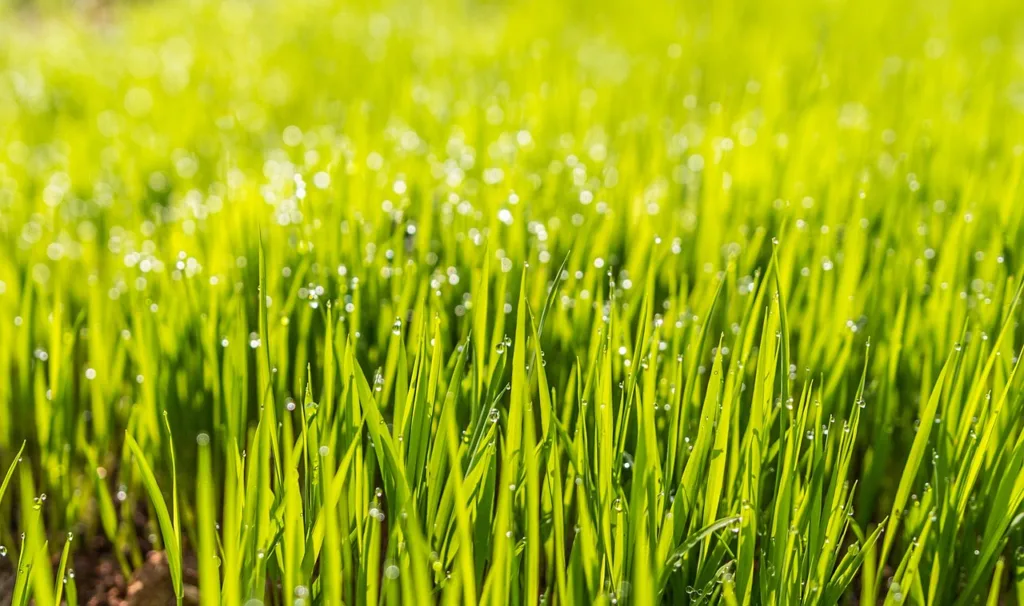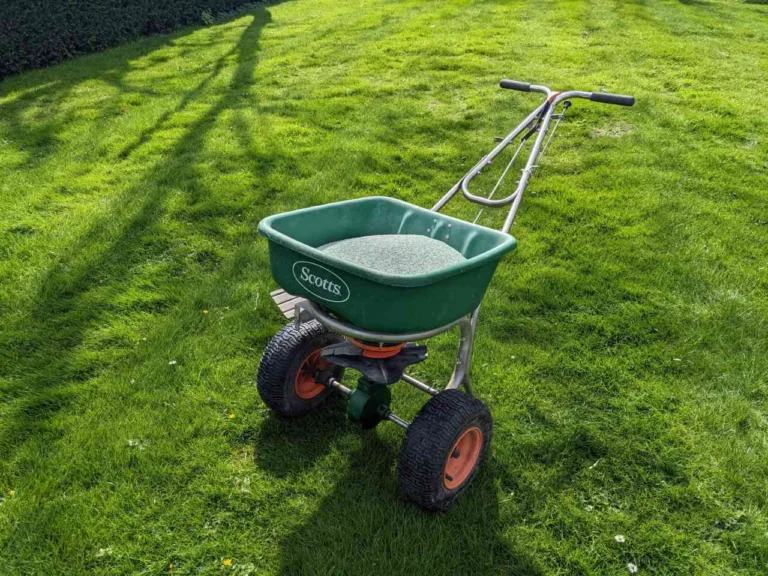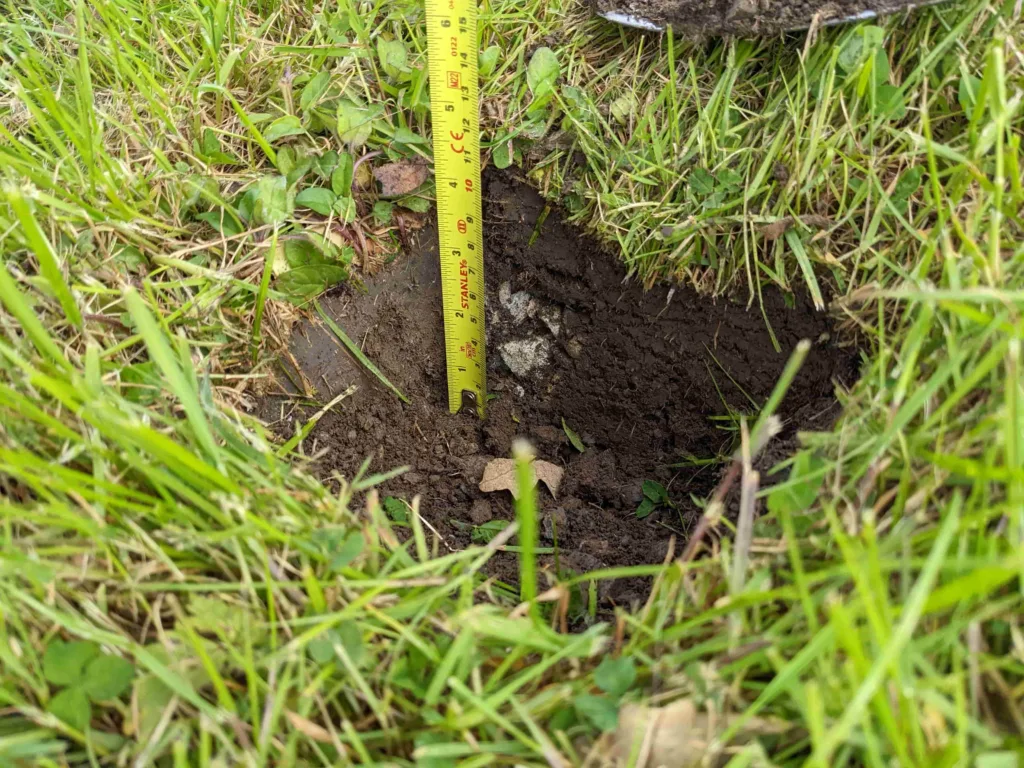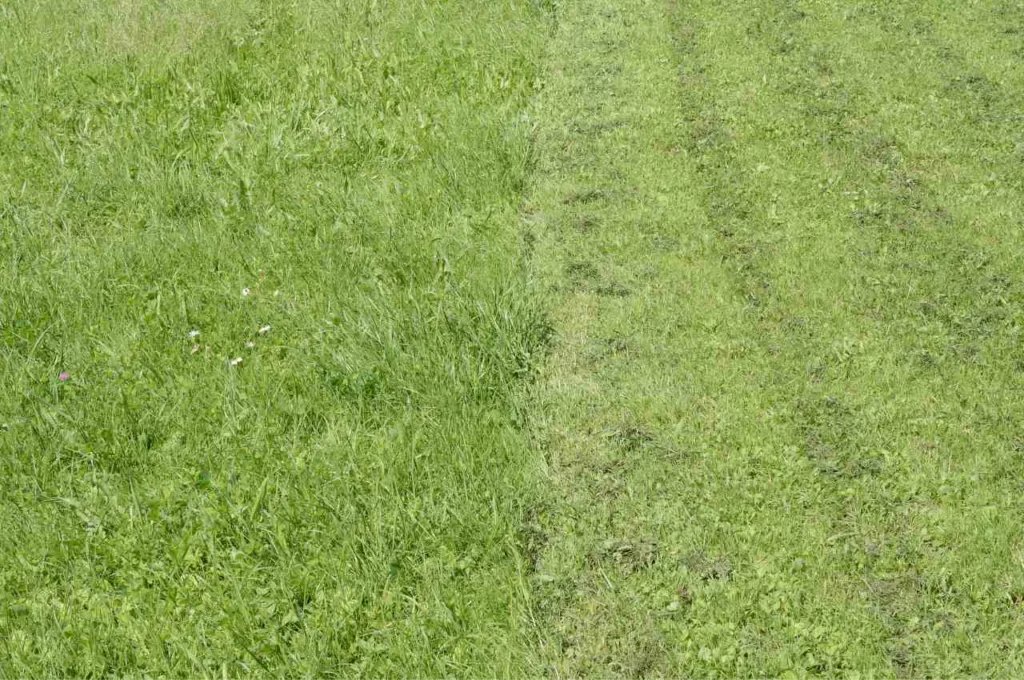Ever wondered why your lawn barely grows an inch all winter, then has a sudden growth spurt in the spring and summer months?
Here, I’ve outlined all the reasons why grass grows quicker in the summer. I’ve also discussed the factors that affect the rate of grass growth, and what time of the year grass grows fastest.
✅ Key Takeaways:
Grass has a faster growth rate in the late spring and summer because the soil temperature is higher, conditions are more favourable for nutrient availability, and the grass has access to adequate water for photosynthesis and nutrient transportation.
Grass usually grows the fastest in April and May in the UK.
There are many factors affecting the rate of grass growth, including temperature and sunlight, soil moisture and nutrients, grass type, and mowing frequency.
Table of Contents
☀️ Why Does Grass Grow Quicker In The Summer?
The main reason why grass grows quicker in the summer is because it’s exposed to longer hours of sunlight and warmer temperatures. Summer weather conditions are more favourable for grass growth, which is why grass stays dormant in the winter and begins to grow once the weather warms up.
Here are all the reasons why grass grows quicker in the summer months:
🥵 Increased Temperature
During the winter months, grass growth rates are slow to non-existent because there’s a lack of valuable resources for plant growth (i.e. sunlight and moisture) and the weather is too cold for photosynthesis to occur. The grass lies dormant during this period.
As spring and summer bring warmer temperatures in the UK, the climate becomes more favorable and photosynthesis can begin once more.
Grass roots can more efficiently absorb nutrients, and grass plants can utilize energy more effectively, leading to faster growth.
🌞 Abundant Sunlight
We might be known for our rainy weather in the UK, but we do get plenty of sunny days in the spring and summer seasons.
Longer days and increased sunlight exposure during the summer provide increased energy to your lawn for fast growth.
Sunlight is essential for photosynthesis (a process carried out by plants to convert sunlight into energy for growth and development).
The longer the hours of sunlight, the more photosynthesis your lawn can carry out, and the more resources it can allocate towards generating new shoots and roots. That’s why grass blades grow faster and greener in the summer.

🌧 Increased Rainfall
We have our fair share of rainy showers, especially during early summer and in the runup to autumn, in the UK.
And in those few weeks of heatwave we get every year, you’re hopefully more mindful of your grass health and water it regularly to keep it alive.
Increased rainfall and irrigation increase the moisture content of your lawn’s soil. Water is essential for grass growth because it facilitates photosynthesis and helps grass plants to move nutrients around their leaves.
So, when you’re shut inside on a rainy summer’s day, at least you’ll know that your grass is getting the moisture it needs for faster growth.
📊 Nutrient Availability
All plants need 17 different nutrients for healthy growth. The majority of these nutrients – including nitrogen, phosphorus, and potassium – are present naturally in the soil.
Warmer temperatures in the summer accelerate microbial and biological activity in the soil. These microorganisms in the soil help to speed up the decomposition of organic matter, in turn releasing nutrients into the soil.
Organic matter breaks down at a faster rate when microbial activity increases with higher temperatures, leading to increased nutrient availability in the soil. This is another reason why lawn grass grows faster in the summer.
There are a few things that people often do in the summer that also increase nutrient availablity, including:
Using fertilizers that support grass plant and root growth by supplying additional nutrients alongside those found in soils.
Mowing your lawn with a mulching mower, which feeds mulched lawn clippings back onto the grass. These clippings decompose and provide an additional source of nutrients to your lawn.

🏁 Favourable Conditions For Your Grass Type
Grass species that are commonly found in UK lawns are usually well-adapted to thrive in summer conditions, when temperatures average around 18-24 degrees Celsius.
These grass varieties are able to withstand warm (but not hot) temperatures, short periods of drought, and other stressors that they’re likely to experience during the summer season. These adaptations enhance the grass plants’ resilience and enable your lawn to grow faster and thicker when the air temperature is higher.
The exception is extreme heat, which grass in the UK isn’t designed to tolerate. Our grass won’t withstand tropical temperatures, and drought damage typically occurs if temperatures stay at around 30 degrees Celcius for 3-4 weeks without rain.
📆 What Month Does Grass Grow Fastest?
In the UK, grass typically grows fastest in April or May, just before summer commences.
A combination of warm weather and high precipitation (all those April showers, which often extend into May) is the reason why you’ll usually enjoy a rapidly growing green lawn in spring.
Many people think that summer is when grass and plant growth really ramps up, but actually, growth slows slightly as rainfall decreases and the weather goes from warm to hot.
Then, once the air temperature cools slightly and the rain really returns in autumn, your lawn will most likely have a second growth spurt before the weather gets significantly colder and grass goes dormant again.
📈 Factors Affecting The Rate Of Grass Growth
There are a few different factors that affect the rate of grass growth in the UK:
☀️🥵 Temperature And Sunlight
The air temperature (and therefore the soil temperature) and the amount of sunlight that your lawn grass has access to both affect its rate of growth.
The soil temperature needs to be at least 6-8 degrees Celcius for seed germination, which is an air temperature of around 10 degrees Celcius. This is also the temperature required for dormant grass to begin growing again.
In cooler temperatures with shorter daylight hours, grass may grow very slowly or not at all, while in warmer temperatures with longer daylight hours, grass growth occurs more rapidly.
🔬 Soil Moisture And Nutrients
Your soil moisture and nutrients also determine the rate of lawn grass growth.
Like most plants, grass needs plenty of nutrients and water to grow. The greater the nutrient and water availability, the better-supplied your grass, and the faster it’ll grow.
Giving your lawn a nutrient or water boost with fertiliser or irrigation should speed up the rate of grass growth.

🌱 Grass Type
Certain grass types are better adapted to growing in certain conditions.
Cool season grasses, like perennial ryegrass, fine fescue, and tall fescue, grow the fastest in the optimum soil temperature range of 18-24 degrees Celsius. Warm season grasses, like zoysia grass, centipede grass, Bahia grass, and bermudagrass, peak in growth in warmer soil conditions, typically at least 26 degrees Celcius.
It goes without saying that you shouldn’t use a warm-season grass on your lawn in the UK because our cold winters will kill it off.
✂️ Your Lawn Mowing Habits
Just like cutting your hair, regular mowing causes grass to grow back faster. So, another reason why grass grows fast during the warmer seasons is that you’re mowing it more frequently.
With that said, cutting your grass too short can have the opposite effect, reducing the available surface area of the grass leaves to the point that they can’t effectively photosynthesize. This could cause your grass to stop growing and turn brown.
Make sure to follow the one-third rule, where you don’t cut off more than one-third of the grass height at any time.

🏁 Final Word
Hopefully, you now understand why you end up with longer grass that grows more quickly in the summer, while your grass does pretty much nothing all winter.
Remember, grass growth isn’t a bad thing! You shouldn’t be looking to reduce your grass’ growth rate, even if it is annoying having to mow more often. A thick, green, healthy lawn is all you can hope for – in fact, a lot of people use lawn feeds to deliberately try to achieve this result.
But if your current mower is past its best and can’t keep up with weekly mows, it might be time to invest in a new lawn mower rather than willing your grass to grow slowly. We’ve shared plenty of guides for buying lawn mowers in the UK, and our best lawn mowers guide is a good place to start.
